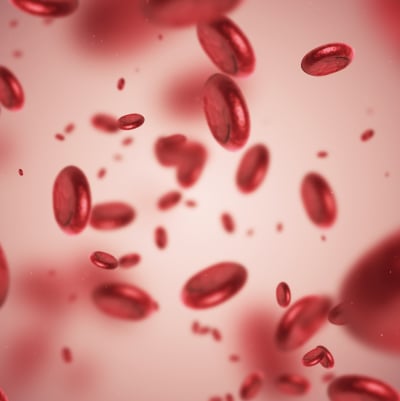Blood biomarker can identify infection-related disease progression

In settings such as the emergency department (ED), early assessment of the potential for further disease progression is vital. An early identification of infection severity is helpful in initiating appropriate treatment strategies. However, currently there is a lack of validated tools to assess risk of further disease progression in patients presenting to the ED with a suspected infection.
A new study of 2,071 suspected infection patients presenting to nine emergency departments across Europe and the USA found that a blood biomarker, called mid-regional proadrenomedullin (MR-proADM), could most accurately identify the likelihood of further disease progression. Incorporation of MR-proADM into an early sepsis management protocol may therefore aid rapid decision-making in order to either initiate, escalate or intensify early treatment strategies, or identify patients suitable for safe out-patient treatment.
The study aimed to identify suitable blood biomarkers – MR-proADM, procalcitonin (PCT), lactate and C-reactive protein (CRP) – or clinical scores (SIRS, SOFA, qSOFA, NEWS and CRB-65) for detecting patients with suspected infection who may suffer from subsequent disease progression. Researchers identified disease progression using a composite endpoint of 28-day mortality, ICU admission and hospitalisation > 10 days.
In all, 1,175 derivation and 896 validation patients were analysed with respective 28-day mortality rates of 7.1% and 5.0%, and hospitalisation rates of 77.9% and 76.2%. MR-proADM showed greatest accuracy in predicting 28-day mortality and hospitalisation requirement across both cohorts. Increased out-patient treatment across both cohorts could be facilitated using a derivation-derived MR-proADM cut-off of < 0.87 nmol/L (15.0% and 16.6%), with decreased readmission rates and no mortalities.
Further analyses showed patient subgroups with high MR-proADM concentrations (≥ 1.54 nmol/L) and low biomarker (PCT < 0.25 ng/mL, lactate < 2.0 mmol/L or CRP < 67 mg/L) or clinical score (SOFA < 2 points, qSOFA < 2 points, NEWS < 4 points or CRB-65 < 2 points) values were characterised by a significantly longer length of hospitalisation (p < 0.001), rate of ICU admission (p < 0.001), elevated mortality risk (e.g., SOFA, qSOFA and NEWS HR [95%CI], 45.5 [10.0–207.6], 23.4 [11.1–49.3] and 32.6 [9.4–113.6], respectively) and a greater number of disease progression events (p < 0.001), compared to similar subgroups with low MR-proADM concentrations (< 1.54 nmol/L).
Similar findings have also been observed in an intensive care setting in patients with high MR-proADM concentrations and initially low or moderate levels of organ dysfunction that progressed towards sepsis-related multiple organ failure. Indeed, continuously elevated concentrations, despite decreasing PCT levels over the first 24 hours of treatment, indicated a high likelihood of subsequent treatment failure and disease progression, thus providing an early and independent prompt with which to change or modify treatment.
These results suggest that the use of MR-proADM to identify the likelihood of infection-related disease progression may therefore be of significant clinical value irrespective of clinical setting or initial disease severity.
The high performance of MR-proADM as a stand-alone parameter as opposed to in combination with a clinical score may facilitate easier use in high patient settings such as the ED, although further observational and interventional studies with similarly large patient populations are needed to confirm and validate the current study's findings. Also, the generation of corresponding health economic data would be beneficial in highlighting potential cost savings from increased out-patient treatment. Source: Critical Care Image Credit: iStock
References:
Saeed K, del Castillo JG et al. (2019) The early identification of disease progression in patients with suspected infection presenting to the emergency department: a multi-centre derivation and validation study. Crit. Care 23:40 https://doi.org/10.1186/s13054-019-2329-5
Published on : Thu, 14 Feb 2019